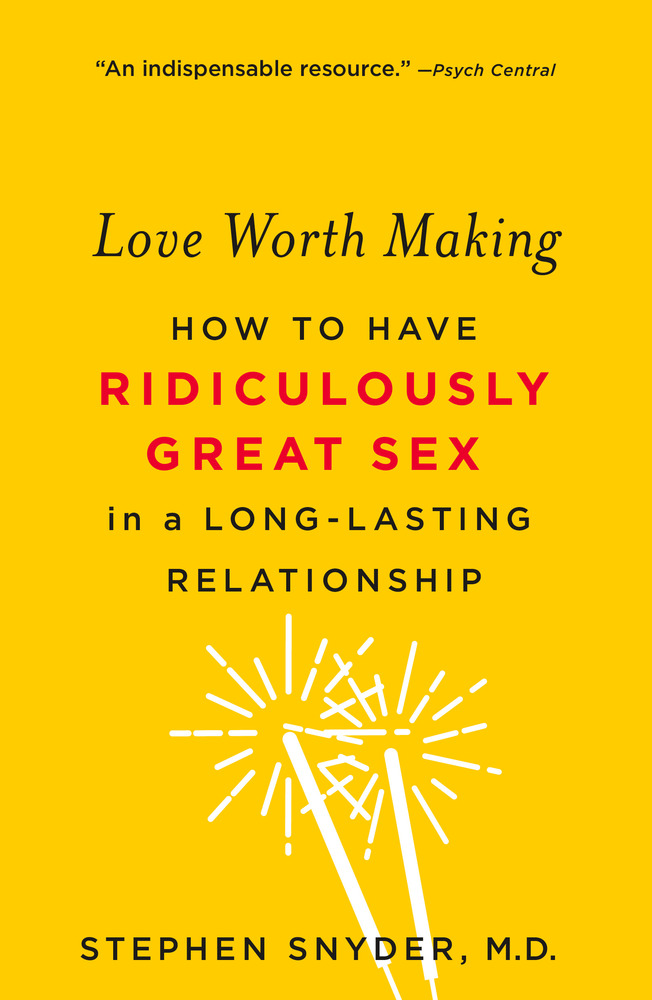How the New Science of Attachment Can Help You Love Better
Is your attachment style secure, anxious, or avoidant? Here’s how you can find out and then put that knowledge to work in your relationship.
There are some things you don’t need to learn—you just know them by instinct. When you’re hungry, thirsty, or exhausted, your mind tells you very clearly what it needs.
There’s another kind of need, though, that for centuries no one gave much thought to. In retrospect it seems pretty obvious—we need to feel securely attached to the people around us.
Buy Now

This need can be every bit as strong as those other needs that we’re more accustomed to thinking about. After all, we’re born helpless—much more so than the young of other species. Small children who are separated from their caregivers, even for a minute, reliably freak out. They act as if they’re in mortal danger, which, in a way, they are.
Attachment styles in young children—”the strange situation”
Until the 1940s, no one thought much about attachment. But since then, there’s been a phenomenal amount of research into the science of what’s known as “the human attachment system.” That’s our instinct to stay secure and protected by keeping people close to us.
In the 1960s, we made the big discovery that young children differ in their attachment behaviors. The classic psychology experiment that demonstrates this is called “the strange situation.”
You take a child, one to two years old, playing in a room with its mother. On cue, Mom leaves suddenly, and the child gets upset. The child’s attachment system senses danger. Then, three minutes later, Mom comes back and you see what happens.
The most common way young kids react is that they take a moment or two to calm down and then they’re fine. Researchers call these kids securely attached.
Different children react in different ways. The most common way young kids react is that they take a moment or two to calm down and then they’re fine. Researchers call these kids “securely attached.”
But there are other kids who take much longer to calm down. They stay agitated, and for a long time they won’t let Mom out of their sight. Researchers call these kids “anxiously attached.” Their attachment systems seem to be extra sensitive.
Then there’s a third group who look, at least superficially, like the securely attached kids. At first glance, they seem fine. But if you watch closely, you see that they’re very stressed. They just handle their stress in a different way. Instead of getting clingy, they shut down. It’s as if they’re saying, “The heck with this. From now on, I’m taking care of myself.” Researchers call this “avoidant attachment.”
Attachment styles and adult romantic relationships
How do things play out when these three kinds of kids grow up? What happens then?
For the last three decades, psychologists have been studying what’s referred to as “adult attachment behavior,” especially in romantic relationships. Interestingly enough, you see the same three basic patterns in adults that you see in small kids:
1. Secure Attachment
On average, just over 50 percent of adults show secure attachment style. They tend to be warm, loving, and quick to forgive. Overall, they’re pretty comfortable depending on others. When they’re in a relationship they don’t tend to worry too much about being abandoned. They also tend to be good at intimate communication.
2. Anxious attachment
About 20 percent of adults have an anxious attachment style. Much like the anxiously attached kids in the psychology experiment who took a long time to settle down after they’d been separated from their mothers, these adults spend a lot of time in relationships worrying that they’re going to be abandoned. As a result, their self-esteem can be pretty fragile. Intimate communication tends to make them anxious, so they’re usually not the best communicators.
Anxiously attached adults spend a lot of time in relationships worrying that they’re going to be abandoned.
3. Avoidant attachment
About 25 percent of adults display avoidant attachment style. Although they have the same kinds of attachment feelings as everyone else, they handle them by what’s called “de-activating” them. They shut their feelings down, just like the avoidant children in the psychology experiment. They take care of their attachment anxiety by making sure no one gets close enough to hurt them. They tend to be unusually self-reliant. Often they’re deeply ambivalent about getting into intimate relationships.
There’s also a fourth attachment style called “anxious-avoidant.” These people tend to switch back and forth between being avoidant and being anxiously attached. But this attachment style is much less common. So for now, I want to focus on the big three: Secure, Anxious, and Avoidant.
How people with different attachment styles behave in relationships
Where all this gets really fascinating is how different attachment styles interact in relationships. There’s now a fabulous book on the subject by Amir Levine and Rachel Heller titled, appropriately, Attached: The New Science of Adult Attachment and How it Can Help You Find—and Keep—Love. I highly recommend it.
People who are securely attached, it turns out, can bond with anyone. They can be with other securely attached people. They can sometimes make good relationships with anxiously attached people. They’re consistent, and reliable, and good communicators, which can do a lot to make an anxiously attached person calm down. And they can also sometimes make good relationships with avoidantly attached people because they don’t get all worried about the avoidant person’s constant need for distance.
People who are anxiously attached tend to get so anxious in relationships that they sometimes end up confusing anxiety and love. It’s easy for anxiously attached people to get hooked on someone with avoidant tendencies who’s really good at pushing them away. Their emotions go through the roof as they try desperately to get their attachment needs met. That can feel like the height of passion, but often it’s just anxiety. Eventually, it can be hard for them to even recognize love unless it’s accompanied by anxiety. If they meet a nice securely attached person who’s not trying to push them away, they can end up feeling kind of bored.
People with avoidant attachment styles tend to be ambivalent about whether they want to be in a relationship at all.
People with avoidant attachment styles tend to be ambivalent about whether they want to be in a relationship at all. This is such a foreign concept to people who aren’t avoidant that they may have a hard time understanding and accepting it. Avoidants are only about 25 percent of the population. But according to Levine and Heller, they make up much more than 25 percent of the individuals on dating apps, since they’re much more likely to be single. That means if you’re hoping to find a partner for a secure relationship, going on Tinder can be a bit like shopping at a poorly managed clothing store. They have everything in stock except the one thing you’re looking for.
How can I find out what my attachment style is?
This being the 21st Century, you can easily find questionnaires online to help you identify your attachment style. One relatively simple measure is what’s called the “Experiences in Close Relationships (ECR) Scale.”
And if you want to get really geeky about it, there’s a page on YourPersonality.net where you can examine your attachment style in much more detail with respect to various people in your life.
Six ways you can use the science of adult attachment to love better
- Keep in mind that attachment styles aren’t necessarily attachment disorders. If you’re anxiously or avoidantly attached, that doesn’t mean there’s anything wrong with you. We’re a diverse species. All three of the major attachment styles—secure, anxious, and avoidant—are legitimate ways of being human.
- Find a securely attached partner. According to Levine and Heller, if you’re one of the roughly 45 percent of the population with anxious or avoidant attachment styles, your best chance of making a good relationship is to get together with someone who has a secure attachment style. Securely attached individuals are a bit like people with O blood type. They’re “universal donors” for things like reassurance and good communication that most people need.
- Find attachment role models. Attachment behavior can sometimes change over time. Levine and Heller suggest for individuals with anxious or avoidant attachment styles to to surround themselves with securely attached people, learn from them, and use them as role models.
- Understand that not everyone is looking for an intimate relationship. Some people, despite what they might say, are doing their best not to be in one. Never take the blame for your partner’s bad behavior. It just might be a sign that you’re not on the same page when it comes to your attachment needs.
- Practice effective communication from the start. Expect empathy from your partner. Repond mindfully to what your partner is saying. “Stay in your own lane” and avoid trying to control the other person. Then listen carefully to the kind of communication you’re getting from your partner. That can tell you a lot about where they’re at, attachment-wise.
- Keep an eye out for someone whose attachment style is a good fit for yours. The science of adult attachment has come a long way in the last few decades. So hey, why not reap the benefits? The more you know about your own needs and vulnerabilities, the more likely you’ll be to find someone who’s a good match for you.






